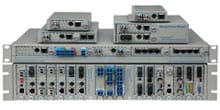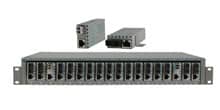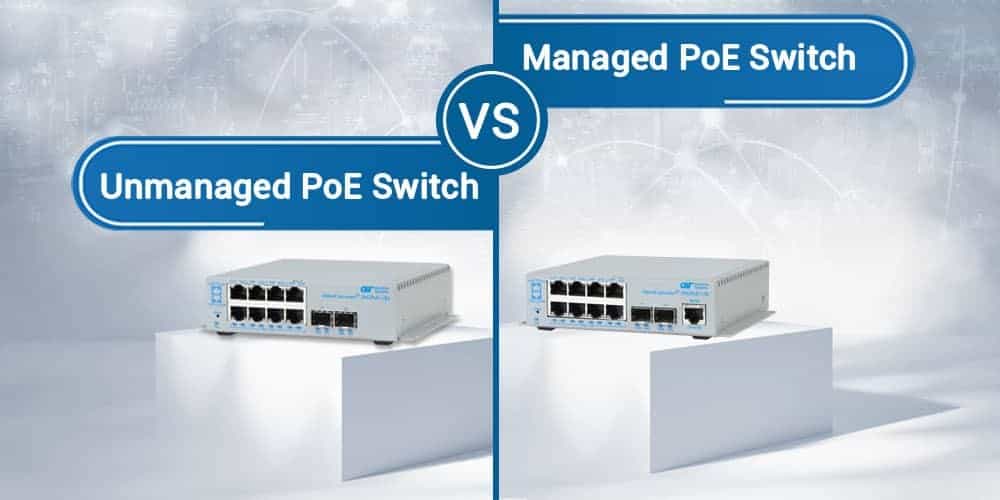- Products
- PoE Media Converters and Switches
- Ethernet & PoE Switches Product Selector
- Multi-Gigabit Ethernet and PoE Switches
- PoE PSE Commercial Switches
- PoE PSE Industrial Fiber Switches
- PoE Industrial Copper Extenders
- PoE Powered Media Converters
- PoE PSE Media Converters
- PoE Extenders & Injectors Product Selector
- Pluggable Transceivers Product Selector
- Product Lines

- iConverter Managed Multi-service Platform
- Copper to Fiber Media Converters
- Ethernet Media Converters
- 10 Gigabit Copper-to-Fiber
- 10/100/1000 Copper to 10 Gigabit Fiber
- 10/100/1000 Copper-to-Fiber with Integrated Management
- 10/100/1000 Industrial Copper-to-Fiber with Integrated Management
- 10/100/1000 Copper-to-Fiber with VLAN
- 10/100/1000 Dual Media Converter with VLAN
- Gigabit Copper-to-Fiber
- 10/100 Copper-to-Fiber with Integrated Management
- 10/100 Industrial Copper-to-Fiber with Integrated Management
- 10/100 Copper-to-Fiber with VLAN
- 10/100 Copper-to-Fiber
- Fast Ethernet Copper-to-Fiber
- Fast Ethernet Redundant Links
- 10Mbps Copper-to-Fiber
- 10Mbps Copper to Coax
- TDM Media Converters
- Serial Media Converters
- Ethernet Media Converters
- Fiber to Fiber Media Converters
- 10 Gigabit Fiber-to-Fiber Converter and Transponder
- 10 Gigabit Industrial Converter and Transponder
- SFP-to-SFP Fiber Converter and Transponder
- SFP-to-SFP Industrial Fiber Converter and Transponder
- Gigabit Fiber to-Fiber with 3 Rs
- 100/1000 Fiber-to-Fiber with 3 Rs
- Gigabit Fiber-to-Fiber
- Fast Ethernet Fiber-to-Fiber with 3 Rs
- Fast Ethernet Fiber-to-Fiber
- OC-3/STM-1 Fiber-to-Fiber
- OC-12/STM-4 Fiber-to-Fiber
- Carrier Ethernet Network Interface Devices
- CE 2.0 - 10G Demarcation NID
- CE 2.0 - 10G Demarcation and Aggregation NID
- CE 2.0 - 10/100/1000 Mult-port NID
- CE 2.0 - 10/100/1000 Mult-port NID with PoE
- CE 2.0 - 10/100/1000 8-Port NID
- SFP NID - Gigabit SFP NID
- microNID - 100/1000 compact NID
- CE 1.0 Service OAM - 10/100/1000 NID
- CE 1.0 Link OAM - 10/100/1000 Copper-to-Fiber NID
- CE 1.0 Link OAM - 10/100 Copper-to-Fiber NID
- CE 1.0 Link OAM - Gigabit Fiber-to-Fiber NID
- CE 1.0 Link OAM - Fast Ethernet Fiber-to-Fiber NID
- CWDM Multiplexers
- T1/E1 Multiplexers
- Ethernet Switch Modules
- Management System
- Chassis Options

- 1-Module Industrial Chassis

- RuggedNet Industrial Switches and Extenders
- Industrial PoE PSE Fiber Switches
- Multi-Gigabit Managed Industrial PoE+/BT Switches
- Multi-Gigabit Unmanaged Industrial PoE+/BT Switches
- 10G Managed 802.3bt PoE Switches
- 10G Unmanaged 802.3bt PoE Switches
- 10G Managed PoE+ Switches
- 10G Unmanaged PoE+ Switches
- 1G Managed PoE+ Switches
- 1G Unmanaged PoE+ Switches
- 1G Unmanaged 802.3bt PoE Switches
- 1G Managed 802.3bt PoE Switches
- Industrial Ethernet Switches
- Industrial PoE Copper Extenders
- Industrial Power Supplies

- OmniConverter Media Converter, Switches and Extenders
- PoE PSE Media Converters
- 10G Multi-Gigabit / Multi-Rate PoE Media Converter
- 10G Multi-Gigabit / Multi-Rate Media Converter
- 10/100 Multi-port PoE+ Media Converter
- 10/100 PoE+ Media Converter
- 10/100/1000 Multi-Port PoE+ Media Converter
- Industrial 10/100/1000 Multi-Port PoE+ Media Converter
- 10/100/1000 PoE+ Media Converter
- 10/100/1000 PoE++ 60W-100W Media Converter
- Industrial 10/100 Multi-port PoE+ Media Converter
- 1U Rack-Mount Shelf
- PoE PSE Compact Switches
- Multi-Gigabit Managed PoE+/BT Switches
- Multi-Gigabit Unmanaged PoE+/BT Switches
- 10G Managed 802.3bt PoE Switches
- 10G Unmanaged 802.3bt PoE Switches
- 10G Managed PoE+ Switches
- 10G Unmanaged PoE+ Switches
- 1G Managed PoE+ Switches
- 1G Unmanaged PoE+ Switches
- 1G Managed 802.3bt PoE Switches
- 1G Unmanaged 802.3bt PoE Switches
- Ethernet Switches
- PoE Copper Extenders
- Single Pair Ethernet Converters
- PoE Injectors

- miConverter Unmanaged Miniature Media Converters
- 10/100/1000 Copper-to-Fiber
- Industrial 10/100/1000 Copper-to-Fiber
- 10/100/1000 Ultra-Compact Copper-to-Fiber
- Gigabit Copper-to-Fiber
- 10/100/1000 Copper-to-Fiber PoE Powered
- 10/100 Copper-to-Fiber
- 10/100 Ultra-Compact Copper-to-Fiber
- 10/100 Copper-to-Fiber PoE Powered
- 18-Module Chassis
- Industrial 10/100 Copper-to-Fiber PoE Powered

- FlexSwitch Compact Switches
- Solutions
- Company
- Support
- How to Buy
What Are Managed and Unmanaged PoE Switches?

Both managed and unmanaged PoE switches have features that make their use desirable for a particular type of network administrator. Deciding which to use depends on the expectation of users, the location of users, and the appropriate budget intended for it.
Being managed or unmanaged in a Power over Ethernet switch is the part that defines whether or not you want to take control of your PoE switch and be responsible for everything that occurs in your network. A managed switch enables better control of networks and the data frames moving through them. Unmanaged switches, on the other hand, enable connected devices to communicate with one another in their most basic form.
Unmanaged PoE Switches
Unmanaged Power over Ethernet switches are the most basic type of switches and are easy to use because they are also known as “plug-and-play switches.” After connecting them to the power supply, they connect the hardware with auto-negotiation of data rates and duplex modes. They work in the simplest possible way, make it possible to connect different devices, and send and receive data with the same quality and speed for each port.

Unmanaged PoE switches do not accept any user input settings. The manufacturer locks the configuration of unmanaged switches, and the user can utilize the performance of the PoE switch in the network without any issues. If the output ports on your routers and access points are limited, you can think of an unmanaged PoE switch as an additional piece of hardware. These switches are best used in local area networks (LAN), such as in schools, offices, and university campuses.
Managed and unmanaged network switches differ in various ways, including control and cost. Managed switches support more granular control, yet unmanaged switches have lower prices.
| Commercial / Unmanaged PoE Switches | ||||
|---|---|---|---|---|
|
PoE Type |
IEEE Standard |
Data Rate |
Powered Pairs |
Ports |
|
PoE/PoE+ |
IEEE 802.3at |
10G |
2-Pair |
Four or eight 10/100/1000 copper PoE/PoE+ user ports Two 1/10G SFP/SFP+ transceiver uplink ports |
|
PoE++/HPoE |
IEEE 802.3bt |
10G |
4-Pair |
Four 10/100/1000 copper 60W or 100W PoE user ports Two 1/10G SFP/SFP+ transceiver uplink ports |
|
PoE/PoE+ |
IEEE 802.3at |
1G |
2-Pair |
Four or eight 10/100/1000 copper PoE+ user ports Two 10/100/1000 copper or Gigabit fiber uplink ports |
|
PoE++/HPoE |
IEEE 802.3bt |
1G |
4-Pair |
Four 10/100/1000 copper PoE user ports Two 10/100/1000 copper or Gigabit fiber uplink ports |
| Industrial / Unmanaged PoE Switches | ||||
|---|---|---|---|---|
|
PoE Type |
IEEE Standard |
Data Rate |
Powered Pairs |
Ports |
|
PoE/PoE+ |
IEEE 802.3at |
10G |
2-Pair |
Four or eight 10/100/1000 copper PoE/PoE+ ports Two 1/10G SFP/SFP+ transceiver uplink ports Unmanaged Industrial PoE Switch 4 and 8 Port PoE/PoE+ 10 Gigabit |
|
PoE++/HPoE |
IEEE 802.3bt |
10G |
4-Pair |
Four 10/100/1000 copper PoE ports Two 1/10G SFP/SFP+ transceiver uplink ports |
|
PoE/PoE+ |
IEEE 802.3at |
1G |
2-Pair |
Four or eight 10/100/1000 copper PoE/PoE+ user ports Fiber or copper uplink ports Unmanaged Industrial Gigabit PoE Switch 4 and 8 Port PoE/PoE+ |
|
PoE++/HPoE |
IEEE 802.3bt |
1G |
4-Pair |
Four 10/100/1000 copper PoE user ports Two 10/100/1000 copper or Gigabit fiber uplink ports |
Managed PoE Switches
After connecting managed Power over Ethernet switches to the power supply, they combine the software with the ability to configure and manage capabilities to bring a better experience of creating efficient networks for network administrators.

These managed PoE switches provide the right tools and features for monitoring the network, prioritizing channels to change the volume or speed of receiving and sending data to give more control over network traffic. Managed switches give you the power to configure and manage the device remotely for a better user experience. You are responsible for any configuration that reduces or increases network performance.
Since managed PoE switches are more advanced than unmanaged PoE switches, they are best used in larger environments. These 5 bullet points will describe the product features of managed PoE switches and make it easy for you to choose.
-
Heartbeat Signal and Configurable PoE Power Reset
The managed PoE switches feature a Remote PoE Power Reset function that enables the user to remotely power-cycle and reset each PD. They also feature a configurable Heartbeat Reset function that automatically pings the attached PDs and automatically power cycles and resets the PDs when detecting a heartbeat loss. The Remote Power Reset and the Heartbeat Reset functions save time and expense by eliminating the need to dispatch manpower to remote network sites.
-
Directed Switch Mode to Prevent Port Flooding
Directed Switch mode prevents port flooding, which means they direct multicast traffic (such as video) only to the appropriate uplink port, preventing multicast traffic from flooding other network ports.
-
Dual Device Mode for Operating as Two Separate Switches
The Omnitron managed PoE switches support Dual Device mode, enabling the PoE switch to operate as two independent and isolated Ethernet switches. In Dual Device mode, the managed PoE switch provides separate and independent data traffic paths between each uplink port and a group of user ports.
-
Uplink Redundancy
The Omnitron managed PoE switches support redundant uplinks, industrial ring Media Redundancy Protocol (MRP), Spanning Tree protocol, and daisy-chain configurations for high-availability industrial network applications.
-
Management Interfaces
The mode of operation can be configured using easily accessible DIP switches or Web, Telnet, SSH, SNMPv1/v2c/v3, or Serial Console management interfaces. IPv4 and IPv6 are supported on the switches. These management interfaces provide access to filtering and security options, such as broadcast storm prevention, IGMP, IEEE 802.1x, RADIUS, TACACS+, and access control lists.
| Commercial / Managed PoE Switches | ||||
|---|---|---|---|---|
|
PoE Type |
IEEE Standard |
Data Rate |
Powered Pairs |
Ports |
|
PoE/PoE+ |
IEEE 802.3at |
10G |
2-Pair |
Four or eight 10/100/1000 RJ-45 PoE/PoE+user ports Two 1/10G SFP/SFP+ transceiver uplink ports |
|
PoE++/HPoE |
IEEE 802.3bt |
10G |
4-Pair |
Four 10/100/1000 copper 60W or 100W PoE user ports Two 1/10G SFP/SFP+ transceiver uplink ports |
|
PoE/PoE+ |
IEEE 802.3at |
1G |
2-Pair |
Four or eight 10/100/1000 copper PoE+ user ports Two 10/100/1000 copper or Gigabit fiber uplink ports |
|
PoE++/HPoE |
IEEE 802.3bt |
1G |
4-Pair |
Four 10/100/1000 copper PoE user ports Two 10/100/1000 copper or Gigabit fiber uplink ports |
| Industrial / Managed PoE Switches | ||||
|---|---|---|---|---|
|
PoE Type |
IEEE Standard |
Data Rate |
Powered Pairs |
Ports |
|
PoE/PoE+ |
IEEE 802.3at |
10G |
2-Pair |
Four or eight 10/100/1000 copper PoE user ports Two 1/10G SFP/SFP+ transceiver uplink ports Managed Industrial PoE Switch 4 and 8 Port PoE/PoE+ 10 Gigabit |
|
PoE++/HPoE |
IEEE 802.3bt |
10G |
4-Pair |
Four 10/100/1000 copper PoE user ports Two 1/10G SFP/SFP+ transceiver uplink ports |
|
PoE/PoE+ |
IEEE 802.3at |
1G |
2-Pair |
Four or eight 10/100/1000 copper PoE+ user ports Two 10/100/1000 copper or Gigabit fiber uplink ports |
|
PoE++/HPoE |
IEEE 802.3bt |
1G |
4-Pair |
Four 10/100/1000 copper PoE user ports Two 10/100/1000 copper or Gigabit fiber uplink ports |
Save the Best for Last
Last but not least, you have to consider whether you want to choose managed or unmanaged PoE switches, which entirely depends on the manufacturers, quality, and compliance. As a U.S. manufacturer, Omnitron Systems is known for its high-quality American products, which means that all Omnitron products must pass quality control in our U.S. manufacturing facility. Omnitron products are the best choice, especially if you need PoE switches for the federal government and military networks (TAA compliant requirements). Now that you’ve decided which of these managed or unmanaged PoE switches are practical for your LAN, it is time to choose other parts of the PoE switch. Read more to learn!
However, if you are still not sure which of these products is the best choice for your network, call us now; we have pre-sale support 24 hours a day, 7 days a week.









